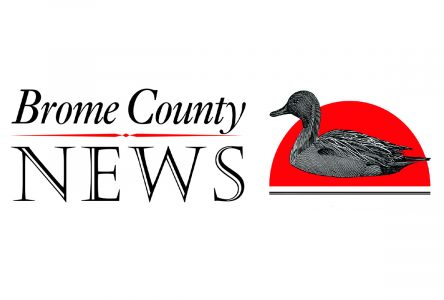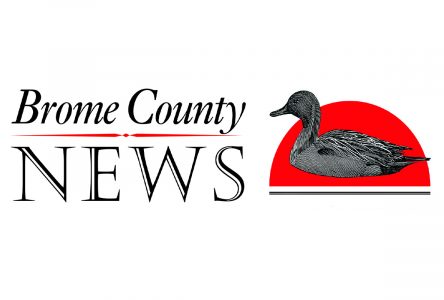To celebrate the Town of Brome Lake’s 50th anniversary, Brome County News (BCN) has been looking to collect historical tidbits and photographs of the seven villages that merged to form the municipality.
Foster, known as Bromemere at the beginning of the 19th century, started to develop around 1832 after John Jones of Montreal purchased land at the outlet of Brome Lake. He built a sawmill, a grist mill, and a carding mill.
Hi son, Charles Jones, continued to develop the land and by 1866 he owned 900 acres that surrounded the mills. His residence was known as “The Gables” and it faced the road leading to Bondville.
Bromemere had a post office starting in 1858 up until the mid 1870s when it closed. It is understood that the Bromemere Post Office was in the Jones residence with Jones as postmaster.
Mail was delivered daily and Bromemere became the halfway stop for stages travelling between Knowlton and Waterloo. It cost 37 ½ cents for people to travel between the villages.
With lots of traffic, Bromemere became a busy corner.
When the Southeastern Railway between Sutton Junction and Waterloo was completed around 1876, the area shifted with traffic and business moving to where Foster is now.
In the mid 1880s, the Canadian Pacific Railway (C.P.R.) was built crossing through Stukely, Magog, and into Sherbrooke which brought more business to the area that became known as Foster, named after Samuel Willard Foster; the judge who secured the land for the C.P.R.
Inglis, Greer, Thomas, Young, and Crowhursts were some of the first families to settle in the area.
The first post office was set up around 1880 with Clement B. Inglis as post master. Inglish would also operate the village’s first store. He was also listed as the railway station’s first station agent in the Eastern Township Directory 1888-89.
The first hotel was the Railroad House built in the late 1880s and a second hotel, the Foster House, appeared in 1905 after being constructed by William D. Inglis. The Foster House closed its doors around 1935.
The first school house in Foster was known as Crowhurst School and it was located on the road to Frost Village but the date of its construction is unknown.
Greer School, the village’s second school, provided elementary level education to children in the village from the 1880s until the early 1940s. Older children attended Waterloo or Knowlton High School, both of which are now elementary schools.
When the elementary school closed, children were sent to Knowlton Elementary School and the older children attended Massey-Vanier High School.
There were two general stores in the area and one burned down in 1960.
Foster also had a water power saw mill on the Yamaska River owned by S.P. and J. Rowell. In the early 1900s, Saul Magoon ran the steam saw mill where the well-known St. Pierre sawmill once stood.
Around 1893, power was generated for the village from a mill and dam built by William Foster who bought the Jones property. Foster and Knowlton had access to electrical power from there on out and if more power was needed, Foster had also built the Stone Power House by the river.
In 1909, the village received its first church. The Bishop Carmichael Anglican Church was built by W.D. Inglis and it was consecrated by Bishop Farthing on July 24, 1910. Services were previously carried out at the schoolhouse.
Église St. Jean de Foster, the village’s Roman Catholic church, was built in 1953 by Col. Philip Piuze and all members of the congregation.
Foster became its own municipality in 1917 with Archibald M. Hunter as the first mayor holding the seat until 1919. Other mayors included Ernest C. Inglis (1919-1923), Ernest W. Taylor (1923-1925), Alvin P. Hillhouse (1926-1933), and many others.
It was Hillhouse that had the Foster Town Hall built in 1917 and he was known as an important business man, he was the manager of the Eastern Townships Poultry Farms for over 25 years. Hillhouse and Hunter owned the town hall building which was used as a council room, a place where Knowlton banks went about their duties, and it was used for social gatherings.
With the vaction houses and cottages around Brome Lake, Foster, like Bondville became a busy place and tourists brought trade to the village.
Surrounded by ski hills, tourists also flocked to the area during the winter season.
Foster became a part of the Town of Brome Lake in 1971 with Foster resident S.G. Quilliams serving as Treasurer in the first year of the new council.
It’s merging with the Town of Brome Lake caused citizens to ask questions about the village’s future, but it continues to stand today with landmarks, like the Bishop Carmichael Anglican Church, standing in all its glory.

